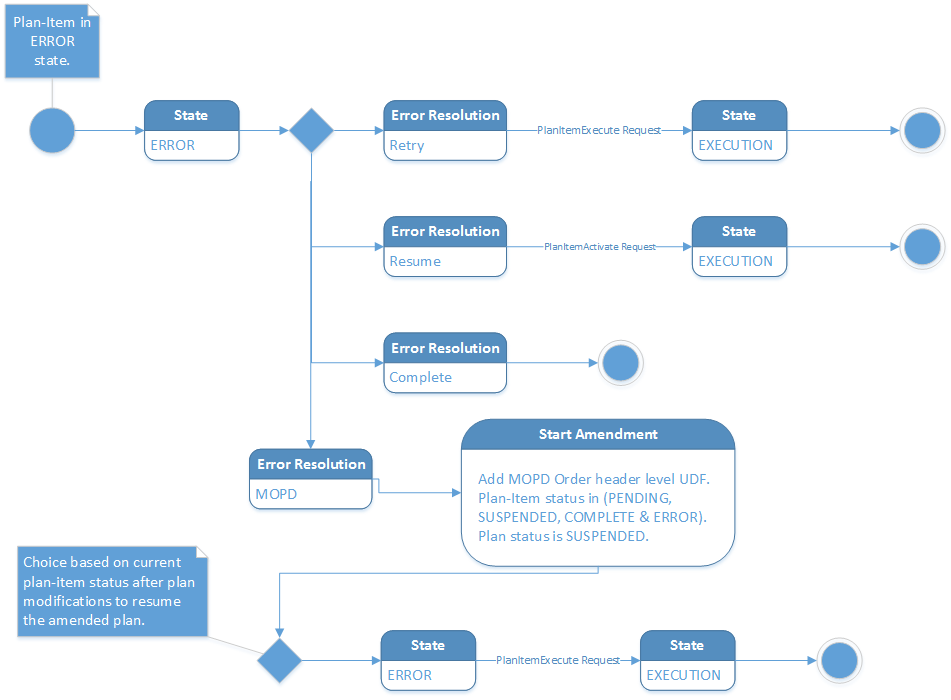Details of Each Resolution Choice
You can choose any appropriate action from the error resolution drop down box and the error resolution chosen will be considered as a resolution choice for that particular plan item.
This changes only when you have chosen MOPD as the Error Resolution. When you choose MOPD as Error Resolution this resolution choice would be applicable to the entire plan and not just the plan item.
The following diagram shows the State Machine diagram for different states of the plan item after user chooses a resolution type for the plan item in ERROR state:
Error Resolution - RETRY
When you submit the error resolution with RETRY as the appropriate action, a new Plan Item Execute Request will be sent for the plan item and the orchestrator will move the plan item state from ERROR to EXECUTION.
Error Resolution - RESUME
When you submit the Error Resolution with RESUME as the appropriate action, a new Plan Item Activate Request will be sent for the plan item and the orchestrator will move the plan item state from ERROR to EXECUTION.
Error Resolution - COMPLETE
When you submit the error resolution with COMPLETE as the appropriate action, the plan item will directly be marked as COMPLETE by the orchestrator. The orchestrator will move the plan item state from ERROR to COMPLETE.
Error Resolution - MOPD
You can select MOPD as the appropriate Error Resolution. MOPD action is treated at plan level which means if you choose MOPD, then the plan will be considered for Manual modification.
And to consider the plan for MOPD we need to start by adding an Order-Header level UDF with MOPD flag. This would be done in the background without any user intervention as soon as you submit MOPD as the Error Resolution.
The following steps are performed after you choose to submit MOPD as the error resolution:
- Order Header UDF is updated with MOPD flag.
- Order amendment, with only UDF modification, is submitted.
- Plan is moved to SUSPENDED state with plan items in (SUSPENDED, COMPLETE, PENDING, or ERROR) state.
- Plan is presented to the user for modifications.
- After user modifications are complete, user will send the modified plan for further execution.
- Plan item in ERROR state will be moved to EXECUTION and PlanItemExecute or PlanItemActivate Request will be sent for this plan item depending upon the type of request that was send for this plan item before it failed. All the other state transitions will remain intact.

